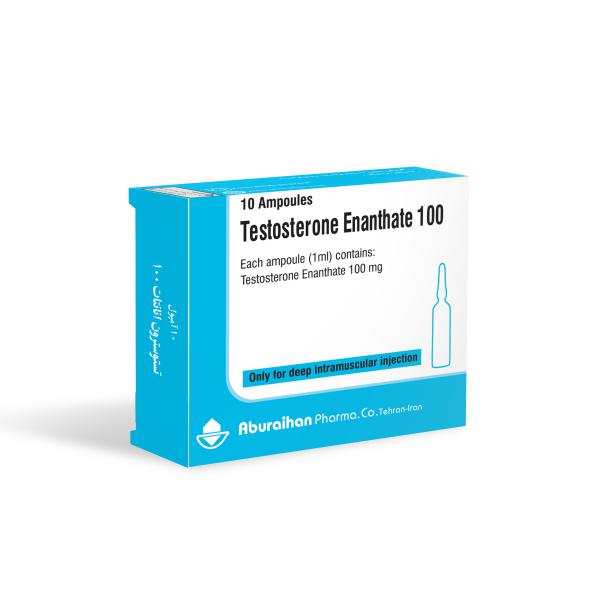Testosterone enanthate
Testosterone enanthate
100 and 250 mg ampoule
Hormone therapy, transgender, female-to-male (off-label use), Hypogonadism, male (primary or hypogonadotropic)
Mechanism of Action:
Principal endogenous androgen responsible for promoting the growth and development of the male sex organs and maintaining secondary sex characteristics in androgen-deficient males
Method of Administration:
Hormone therapy, transgender, female-to-male (off-label use):
IM (testosterone enanthate): 100 to 200 mg every 2 weeks or 50 to 100 mg every week
Hypogonadism, male (primary or hypogonadotropic):
Initial dosage: 75 to 100 mg once weekly or 150 to 200 mg every 2 weeks
Usual dosage range: 50 to 100 mg once weekly or 100 to 200 mg every 2 weeks
Notes
Contraindications:
Hypersensitivity to any component of the formulation; patients who may become pregnant, Breast cancer (males); prostate cancer (known or suspected)
Interactions:
Agents with Blood Glucose Lowering Effects: Androgens may enhance the hypoglycemic effect of Agents with Blood Glucose Lowering Effects. Risk C: Monitor therapy
CycloSPORINE (Systemic): Androgens may enhance the hepatotoxic effect of CycloSPORINE (Systemic). Androgens may increase the serum concentration of CycloSPORINE (Systemic). Management: Consider avoiding concomitant use of androgens and cyclosporine. If concomitant use is unavoidable, monitor serum cyclosporine concentrations and for signs and symptoms of hepatotoxicity. Cyclosporine dose reductions may be required. Risk D: Consider therapy modification
Dehydroepiandrosterone: May enhance the adverse/toxic effect of Testosterone. Risk X: Avoid combination
Vitamin K Antagonists (eg, warfarin): Androgens may enhance the anticoagulant effect of Vitamin K Antagonists. Management: Monitor for increased effects of vitamin K antagonists if an androgen is initiated/dose increased, or decreased effects if androgen is discontinued/dose decreased. Significant reductions in vitamin K antagonist dose are likely required. Risk D: Consider therapy modification
Pregnancy and Lactation:
Use is contraindicated during pregnancy.
Testosterone is present in breast milk. It is not recommended.
Warning and Precaution:
- Breast cancer: Long-term use (>10 years) of parenteral testosterone for male hypogonadism may increase the risk of breast cancer.
- Cardiovascular events: Available studies are inconclusive regarding the risk of developing major adverse cardiovascular events (MACE) such as nonfatal myocardial infarction (MI), stroke, or cardiovascular death following testosterone use.
- Dyslipidemia: May alter serum lipid profile; use caution in patients with history of MI or coronary artery disease.
- Gynecomastia: May cause gynecomastia, which may persist in patients treated for hypogonadism.
- Hepatic effects: Prolonged use of high doses of androgens has been associated with serious hepatic effects (peliosis hepatis, hepatic neoplasms, cholestatic hepatitis, jaundice). Prolonged use of intramuscular testosterone enanthate has been associated with multiple hepatic adenomas. Discontinue therapy if signs or symptoms of hepatic dysfunction (such as jaundice) develop.
- Hypercalcemia: May cause hypercalcemia in patients with prolonged immobilization or cancer.
- Polycythemia: May increase hematocrit requiring dose adjustment or discontinuation. Withhold initial treatment in patients with hematocrit >48% or >50% if living at higher altitudes. Discontinue therapy if hematocrit exceeds 54%; may reinitiate at lower dose.
- Priapism: Priapism or excessive sexual stimulation may occur; discontinue therapy if this occurs, if restarted, a lower dose should be used.
- Prostate cancer: May increase the risk of prostate cancer. Withhold therapy pending urological evaluation in patients with palpable prostate nodule or induration, PSA >4 ng/mL, or PSA >3 ng/mL in patients at high risk of prostate cancer.
- Venous thromboembolism: Venous thromboembolic events, including deep vein thrombosis (DVT) and pulmonary embolism (PE), have been reported with testosterone products. Evaluate patients with symptoms of pain, edema, warmth, and erythema in the lower extremity for DVT and those with acute shortness of breath for PE. Discontinue therapy if a venous thromboembolism is suspected. Use in hypogonadal males with thrombophilia is not recommended.
Adverse Reactions:
Cardiovascular: Hypertension (≤13%; intranasal: >6%)
Dermatologic: Skin blister (application site; transdermal: 12%)
Genitourinary: Prostate specific antigen increase (≤18%; buccal, oral: 2%), benign prostatic hypertrophy (12%)
Hematologic & oncologic: Increased hematocrit (subcutaneous: 8% to 14%; topical, oral: ≤6%; buccal, intramuscular: 1%)
Local: Application-site pruritus (transdermal: 17% to 37%)
Storage:
Store below 30 and protect from light and moisture.


